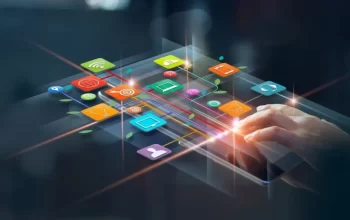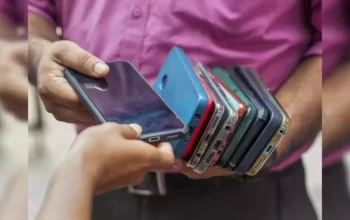No, no, no! Not that awful rainbow circle again. It’s starting to pop up whenever you open an app on your Mac.
It seems like you just got your Mac! Why is it running so slowly? Why does your battery drain so fast?
Computer problems are a sure-fire way to ruin your mood. Not to mention they’ll make you want to toss your beloved device across the room. But before you let it fly, there are a few (fixable) reasons why your Mac may be running slow.
Check them out below before you send your MacBook sailing.
Is Your Mac Running Slow?
A fair question to ask is whether your Mac is truly running slow. You may have recently made the switch to Apple and expected it to run at a particular speed. Or you could be questioning the suggested battery life you saw online or in the manual.
Macs, like any computer, have their limitations. Speed and battery estimates are often made without taking into consideration how you’ll be using your computer.
So if you’re getting 8 hours of battery life instead of 10, you may not have a problem. But if you’re struggling to use apps or bounce between tabs, you might have an under-performing Mac.
Seven Reasons Your Mac Is Running Slow
Below are seven common causes of a slow Mac. Go through each one and check them against your device. If you’re still having problems after that, you may need to contact Apple Support.
- Your Hard Drive Is Full
If you’re wondering what computer issues are slowing down your Mac, it’s likely a full hard drive. Your Apple computer comes with a pre-determined hard drive capacity. This is how much storage your device is built to handle.
The trouble with Apple products is there’s no way to expand their hard drive. What you get is what you have to work with.
So if your computer is starting to lag, you may want to investigate its hard drive. It will need some free space on the hard drive to continue operating properly.
To evaluate your computer’s hard drive, click on the Apple logo at the top left of your toolbar. Go to “About This Mac” and click on “Storage” at the top.
From there, you’ll be able to see how much storage you’ve already used and how much is still available. If you move your mouse over the colored sections, you can see what takes up the most space (apps, photos, etc.).
- You’re Running Out of Storage
If you find that you’ve used up too much of your computer’s storage, you’ll need to know how to get rid of other storage on Mac. For documents, photos, and videos, see if you can transfer them to your iCloud account.
If you aren’t using apps that are downloaded onto your computer, delete them. You can do this by going to the Finder and clicking on “Applications.” Find the app you want to delete, right-click on it, and select “Move to Trash.”
If the application comes standard with your Mac (like Photo Booth), you won’t be able to delete it. Instead, follow the steps above and select “Compress [App Name]” instead of “Move to Trash.”
- You’re Multitasking
Multitasking can also slow down your Mac. This means having multiple apps open or keeping a dozen or so tabs open in your browser. It also depends on the device you have.
Older models of the iMac, MacBook Pro, and MacBook Air will slow down as you multitask. This happens because their battery may be worn. Their systems may struggle to run more up-to-date applications.
Similarly, the kind of processor your computer has will account for its speed, as well. An Intel i3 processor will run slower than an Intel i7 or an M1 chip. And MacBook Airs, which are made for lighter tasks, will run slower than MacBook Pros.
Check to see when your computer tends to lag the most. Is it when you have twenty tabs open? Or does it happen no matter what you’re doing?
Certain browsers will drain your battery and cause delays, as well. Safari is your best bet for optimizing your Mac’s performance.
- Your Computer Has Malware
If you find your computer running slow, you’ll want to check for malware. Though having a malware attack (or a virus) is uncommon with Macs, it’s not impossible. If you’ve clicked on a link in an email, visited a sketchy website, or used a file-sharing app, this may be your issue.
One way to avoid malware is to adjust your app download permissions. Go to your system settings and find the “Security & Privacy” section.
There you’ll see an icon that looks like a lock. Click on that and enter your login information.
Then click the “General” section. You’ll see where you can change your app download permissions. Only allowing apps to be downloaded from the App Store can help reduce your chances of getting a virus.
It’s also good practice to install and run malware protection software. Clearing caches regularly is helpful, too.
- Your Mac Is Too Hot
MacBook problems can occur when a device overheats. You’ll be able to tell when your computer is “working harder” because you’ll hear the fan kick in. If the fan is running constantly, your computer isn’t cooling properly.
This may mean you need to lower the number of apps you have open. Or, you may be running apps that your computer wasn’t built to handle. For example, trying to run graphics-heavy gaming or design apps on your MacBook Air.
You might use your computer on a soft surface, like a bedspread, carpet, or blanket. That can inhibit your computer from cooling down as well. Try adjusting your location and see if that helps your computer run faster.
- Too Many Extensions or Startup Apps
Too many browser extensions or startup apps will slow your computer down. If you have 10 apps queued to open when you start your computer, that’s going to bog down your speed.
Similarly, if your browser is running a ton of extensions in the background, you may notice more lags. Try to limit the number of apps and extensions to the ones you absolutely need.
- Your Mac Is Old
As much as we hate to say it, age does play a role in how fast your Mac runs. Some Macs aren’t eligible for updates anymore. If that’s the case with your device, you’ll likely notice a difference in its operating speed.
If you need to upgrade your machine, try finding a trade-in service through Apple or Amazon. Or, you might be able to recycle your device with Apple. In some cases, they’ll even give you a discount on your new computer.
Fixing Computer Problems
Computer problems are such a pain! Especially when you invested a lot of money into a quality Apple product. The last thing you want to do is buy a new device.
But now you know how to work around some of the most common issues related to operating speed. Troubleshoot them and see if you can get a better performance out of your computer.
For more on taking care of your Mac, visit our Technology section.







